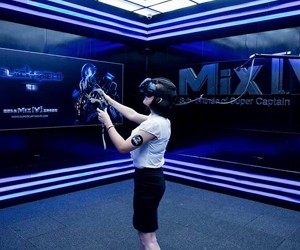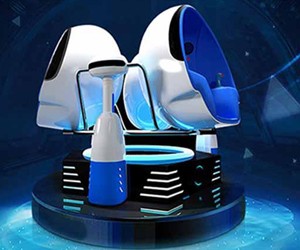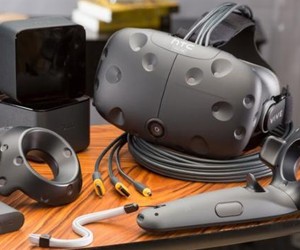 24-hour service hotline
24-hour service hotline
 24-hour service hotline
24-hour service hotline
POS device battery, Wearable device battery, Electronic scale , cell phone battery,
 Address:
Address:
5th Floor, Building C, Funing High-tech Industrial Park, Xintian Avenue, Fuyong Town, Baoan District, Shenzhen
 Tel:
Tel:
+0755-81451866
 Fax:
Fax:
+86-755-29926528
 Email:
Email:
purchase@hi-chipcom.com

What does the Vr on the lithium battery mean? What is the meaning of vo and vr in the battery comprehensive tester VOL and V-L are displayed alternately, VOL is the battery open circuit voltage, and V-L is the battery load voltage IMP is the internal resistance of the battery, OVC is the current value of the battery over-current protection

What kind of battery is used in VR glasses? The battery used in VR glasses has a big feature, that is, the battery can have a certain degree of curvature or a certain degree of thinness. The device you wear on your head must be as light as possible. So this also determines that VR batteries generally use special-shaped batteries. The minimum thickness of special-shaped batteries produced by Grepp can be up to 0.4 mm, the minimum width can be up to 6 mm, and the minimum weight can be up to 9 grams.

New breakthrough in lithium-based batteries: alleviate the aging of VR batteries and triple the capacity For some VR headsets and AR headsets, just like mobile phones, future battery life is also a very important issue to be solved. For example, Google’s Daydream VR platform requires battery technology that can guarantee long battery life. Good experience of VR/AR, now it seems that graphene battery technology can solve this problem well. Researchers at Rice University have just announced a prototype of a new type of lithium-based rechargeable battery with a capacity up to three times that of current lithium-ion batteries. This technology is expected to become a new development in lithium metal batteries (there is no successful precedent in the industry), especially to solve the serious impact on battery life, but also a solution-the use of carbon and graphene nanotubes. "Unique anode", this technology can effectively solve the longevity and service life of VR/AR batteries. In a recent statement, it stated that the use of this new technology…

Does the battery need to be activated? The answer is that the battery needs to be activated, but this is not what the user has to do. I have visited a lithium-ion battery production plant. Before leaving the factory, the lithium-ion battery has to go through the following processes: Lithium-ion battery case is filled with electrolyte---seal---formation, which is charging at constant voltage, then discharging, and performing several cycles so that the electrode is fully infiltrated in the electrolyte and fully activated until the capacity reaches the required capacity. This is activation The process-capacity classification is to test the capacity of the battery and select batteries with different performance (capacity) to classify, classify the battery, and perform capacity matching. The lithium-ion battery produced in this way has already been activated by the user. The nickel-cadmium batteries and nickel-metal hydride batteries commonly used by all of us are also formed and activated before leaving the factory. The activation process of some of the batteries requires the battery to…

Do I need to charge the battery for 12 hours the first three times? The answer is that you don’t need to charge for 12 hours. Early cell phone Ni-MH batteries required replenishment and trickle charging. It may take about 5 hours to reach the most perfect full charge, but it does not require 12 hours. The constant current and constant voltage charging characteristics of lithium-ion batteries determine that its deep charging time does not need 12 hours. For lithium-ion batteries, some people may ask, since the current of the lithium-ion battery gradually decreases during the constant voltage stage, is it true that deep charging is done when the current is as small as infinitely small. I once drew the curve of current reduction versus time in the constant voltage stage, and performed multiple curve fittings on it. I found that this curve can be approached to zero current by a function of 1/x. The actual test is due to the existence of the…

There is a saying that if the rechargeable battery is used properly, the best state will appear in a certain cycle range, that is, the maximum capacity. This depends on the situation. Sealed Ni-MH batteries and Ni-Cd batteries, if used properly (such as regular maintenance to prevent the generation and accumulation of memory effects), will generally reach their maximum capacity after 100 to 200 cycles, such as After 120 cycles of Ni-MH battery with factory capacity of 1000 mAh, its capacity may reach 1100 mAh. Almost all Japanese Ni-MH battery manufacturers’ technical specifications describe the cycle characteristics of nickel-based batteries on the graphs that I can see. To this description. ★Nickel-based batteries have the best condition, generally reaching their maximum capacity between 100~200 cycles For liquid lithium-ion batteries, there is no such a humping phenomenon of cycle capacity. From the time the lithium-ion battery leaves the factory to the final battery failure, the performance of its capacity is to use once less once. I have…